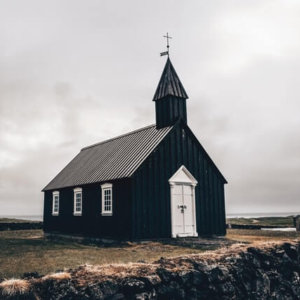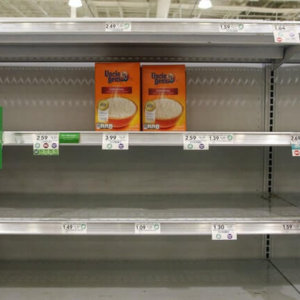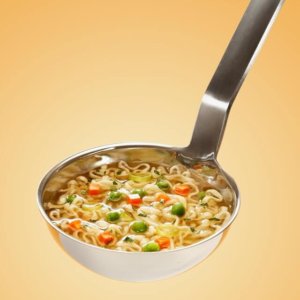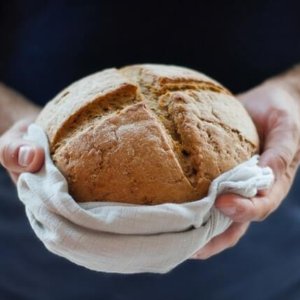How to feed your spirit when churches close
When churches close
I received a sad but all too common letter last week that announced the closing of a couple of churches dear to my heart. Soon the heat will be turned off, the doors locked tight and the real estate will become an apartment building or a clinic or an art gallery.
But what about the people?
I am not particularly concerned about the reasons churches close their doors. I accept that as part of a life cycle. But I do care about the people. People whose hunger and thirst continue whether there is a building or not.
I have similar thoughts and concerns when a major restaurant closes, or a supply chain fails to fill the shelves in the grocery store.
Some people may not shed a tear when an old relic of brick and mortar is replaced by condos, and yet they too get hungry and thirsty for things of the spirit.
Today, with all the chaos in our world, the deeper questions persist. We ask “why?” when people suffer, we yearn for relief from the burden of grief, and at some level, we have all asked ourselves if there is anything ‘Beyond’.
I capitalize that word to indicate that I am not talking about the next town, the next Black Friday sale, or the next election. It is inherent in our human condition to have curiosity and hunger for experiences beyond the physical realm.
How to meet spiritual hunger
Spiritual hunger goes by many words, but there is within each of us a yearning for ‘something’ that makes sense when nothing else does.
Traditionally this hunger moved families and communities to gather in churches, synagogues, mosques, and home meetings for prayer and communal worship.
Times have changed. Traditional places of worship use Zoom to reach their members, many are closing permanently, and even home gatherings are limited by COVID. 
Yet the loss of places to meet and practice one’s faith does not end our spiritual hunger. If you are among those who never practiced any particular religion, or left disenchanted with what you were served when you did go, I suspect you still continue to search for peace, forgiveness, inner strength, and hope in your life. This IS the spiritual journey.
When major food chains shut down, people do not stop being hungry. When waterpipes freeze in the winter, we still get thirsty. We strive to nourish our bodies regardless of the circumstances in which we live.
Our spiritual needs continue in the same way. So when illness and adversity strike, people (even ‘unbelievers’) still ask for prayer.
In the face of death a common hunger is an answer to “What now?”
When we hurt others we seek forgiveness.
And I haven’t met anyone who doesn’t want to have hope and joy and peace in their lives.
Perhaps you are among those who say you never felt a need to go to church, and you are not sure about a God who would let so many people suffer, and you disagree with all the rules that say you are going to hell if you don’t do things their way.
I get it! And I agree!
This is not a treatise on the value of religion. It is an exploration of how to quench our thirst in a drought and stay nourished along the way.
I can suggest 4 simple steps……
1. Recognize the hunger
When we don’t recognize our spiritual hunger, we don’t reach out for the right food.
If you are like me, I often misinterpret what I think is physical hunger and my hand reaches for the cookie jar.
When I am able to connect with my spiritual hunger, I am able to release the cookies and reach for something to feed my spirit.
It may be art or music or meditation or a walk in nature. But recognizing spiritual hunger is the first step to releasing the pretzels, ice cream and wine which may be a go-to when we feel hungry.
2. Find new sources when the shelves are empty
I have been amazed at the empty shelves in the grocery store these days.
It does no good to rant about the fact that grocers don’t have my favorite yogurt or a decent cucumber.
I am learning to create new dishes with ingredients I may never have tried — from stores I never checked out when I thought my local grocer had everything I needed.
The same holds true for spiritual food, and I find myself appreciating flavors and practices from throughout the world and across the ages.
3. Make more soup.
I confess — I am a ‘left-over’ junkie.
And one of my favorite dishes is soup with little bits from previous meals blended together, spiced and served with ends broken from a loaf of bread.
When we blend flavors from across the world and ‘break bread’ offered by other traditions, there results a delightful and nourishing mix that feeds our spirits with a soup that may include mindfulness meditation, yoga, breathing, holy writings and many types of prayer.
4. Share what you have
Have you ever noticed that when times are difficult, those who have the least are often the first to share with others — and do so generously.
There is something about sharing whatever you have found to feed your spirit that multiplies the blessing — a deeper understanding of the “loaves and fishes” that Jesus shared with crowds of people. (Matthew 25:34-36.)
I am forever grateful for friends who are Wiccan, Buddhist, Islamic, Jewish, Native American and Christian who have shared their soup and broken bread with me. My spirit remains full, in the presence of empty shelves and closed supply houses.
When a well-known path to spiritual food ends, it is time to find new paths, and creative ways to blend and share the ingredients that we find along the way.
It is good. It is all good.
[PHOTO CREDITS from UNSPLASH: old-church-by-Michelle-Tresemer; ladle-of-soup-by-Piotr-Miazga; Empty-shelves-byMick-Haupt; cookies-in-hand-by-Sharon-Mccutcheon; clasped-hands-by-Priscilla-du-Preez; bread-by-Kate-Remmer]
Join many happy readers of TheReflectivePen!


Tasha Halpert
Well and thoughtfully said. Thank you.
Ardis Mayo
Thank you, Tasha
Sue
TY. I have always felt I was on a spiritual journey, but believed that the goal was to find the ‘right spiritual fit’. That once I found the ‘right church’, ‘right fellow practitioners’, ‘right pastor’ etc, that then I could have a ‘home’ in which to focus, practice and grow. If I’m understanding you, it appears that I have misunderstood! It appears that the days of searching are the ‘right fit, the right practitioners, the right lessons’ and I can continue to ‘search’ as I choose, as it’s all part of the spiritual path and teaching.
Ardis Mayo
Yes, Sue, you are understanding me correctly. It isn’t the destination, it is the path! Some people put their tent pegs down at a very early age and feel ‘at home’, and others are nomadic. What we fail to see is that wherever we put our pegs, it is still a moveable feast. May you find ‘home’ all along your way.
Rev Anneli Sinkko
I’ve been very selfish during the troubles we are in presently. I informed my church I need some time off – and I did. I’ve been so tired lately and I needed to have some time off with God and with me. Yes with ME! I needed to meditate who God is and who am I and I found out a few things;
1] God is still there and H e is truly good. As far as God is concerned nothing has changed – hallelujah!
2] I am one of those people who wants to save the entire world in one day – or better should have done it yesterday. Now I have come to realize that I cannot save the world – nor I have to. Wow. It is Jesus who saved the world – not me. What a relief.
3] Consequently I am allowed to have time off and rest and read and watch television and go to parks for a walk – how wonderful.
And now I have taken a different path from the subject Matter of the Spiritual Thirst. Soory – but we have to realize that we cannot quench this thirst by human means – we need to go to Jesus who has in his warehouse the Living waters – abundantly.
Thanks for listening / reading for my rant. Love Anneli
Ardis Mayo
I am so happy for you that you have found a font that fills your thirst. And I agree that quenching by ‘human means’ is not satisfying. I do believe, however that ‘Jesus’ (ie – divine love and wisdom) is found in many places and goes by many names.
bev
I am grateful for your reflection this week, on spiritual hunger and how we nourish ourselves when our own favorite well dries up. These thoughts are universal, tender, wise, easy to “digest,” clear, and comforting for me. I plan on forwarding this to some friends who have suffered a recent church closing. But the nourishment here goes beyond a building full of history and memories and extends to any loss, of any sort. I am filled with these suggestions. Many thanks, Ardis.
Ardis Mayo
You are welcome, Bev. And thank you for your kind and affirming words. Some subjects are difficult to write about and this was one of them.
Susan Shofner
Good morning Ardis. A difficult and timely subject. I put off reading this because our church will go through the closing process in the near, not distant, future. I am not sure where I will go to worship. But when the doors close I am sure God will open a door somewhere else. I had been away from this church for many years. Yet when I needed His help the most, He always answered. So I believe He will continue to provide for our needs — wherever we choose to meet Him. Thank you for sharing this.
Ardis Mayo
I am so sorry that you are losing what you so recently found. The closing of churches brings a lot of grief and confusion. May you find in the days ahead that which you need to feed your soul.